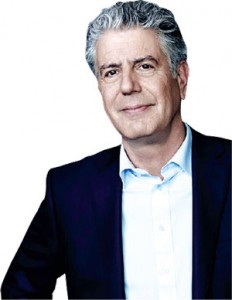More than 500 years ago, Algonquin Indians were trading meat and crops on an area along the Hudson River in Chelsea. In 1993, developer Irwin Cohen paid $9 a square foot for a rundown complex on that same spot and four years later he debuted the Chelsea Market, a gourmet food and shopping hall. At the time, retail rents at the Chelsea Market were $25 per square foot. Today, they are well over $100 per square foot, according to news reports. And the Chelsea Market has spawned roughly a dozen food halls. These markets bring together a wide variety of trendy specialty foods into one culinary potpourri. Where else can you dine on an Iraqi pita pocket, a $17 lobster roll and Japanese-inspired tacos all in one place? It’s no wonder many more are on the way, including celebrity chef Jean-Georges Vongerichten’s 40,000-square-foot seafood-themed hall planned for the South Street Seaport. Food halls are headed for the outer boroughs, too. The creators of Gansevoort Market, which opened in 2014, will bring one to the Marketplace at Empire Outlets on Staten Island in 2017. “Because people eat out so much, food is becoming a major aspect of most developers’ plans,” said Anna Castellani, managing partner of the forthcoming DeKalb Market Hall in Brooklyn.
140,000 sq. ft.
The combined size of the eight food halls that have opened in NYC in the last five years. That includes a 32,000-square-foot space at the Plaza Hotel and Brookfield Place’s two food halls — Le District and Hudson Eats — which total 60,000 square feet. There are also at least 10 more food halls planned in the city over the next few years.
 30
30
The number of food (and other) vendors that will fill the 15,000-square-foot TurnStyle marketplace, which is set to open in the concourse of the Columbus Circle subway station in March 2016. Retailers include Fika Espresso, Doughnuttery, Dylan’s Candy Bar and Pressed Juicery. Rents will range from $275 to $425 per square foot.
$7,000
The minimum monthly going rate most vendors pay for space at a food hall in Manhattan. A majority of food halls base their rent on a percentage of gross sales, sources say. However, locations with a mix of traditional retail and food, like TurnStyle and Fulton Center, tend to charge standard per-square-foot rates.
$3,750
The starting monthly rent for a stall at the 26,000-square-foot DeKalb Market Hall in the City Point development in Downtown Brooklyn. The market, which is scheduled to open in late 2016, will be the borough’s biggest. The hall can fit 54 vendors, but some will take more than one space, so the total count will be closer to 35 or 40.
100 sq. ft.
The size of the smallest vendor stations at Brookfield’s Le District. The largest at the hall are upwards of 1,000 square feet. While the vendors do some back-of-house preparation downstairs, they have a “pretty small footprint,” said Mark Kostic, the vice president of retail leasing at landlord Brookfield Properties.
$1.8 million
The amount star chef Claus Meyer and investors will pay in the first year of a 10-year lease at a 16,000-square-foot space at Grand Central Station. Meyer, who’s behind the famed Noma restaurant in Copenhagen, will transform the hall into a Nordic-themed culinary haven. The investors will see their rent go up after year one.

Anthony Bourdain
100,000 sq. ft.
The estimated size of Anthony Bourdain’s much-hyped Bourdain Market, which is slated to open in 2018 at Pier57 on the Far West Side. The $60 million market will be twice the size of Eataly. More than 100 retailers are expected to hawk their food at the Asian-inspired hall.
25,000
The number of people who reportedly pass through Eataly — which is run by a trio of celebrity chefs, including Mario Batali — every weekend. Around 10,000 visitors are at the Madison Square Park-adjacent site on weekdays. Gotham West, another food hall, has upwards of 2,000 visitors a day. Bourdain’s market expects some 20,000 people daily.
$4.75
The amount the 475 vendors at the Essex Street Market paid per stall when it was opened by Mayor Fiorello La Guardia on the Lower East Side in 1940. Today, a 15,000-square-foot fall hall remains, but in 2018 it will move to the Essex Crossing project, where it will double in size.
Correction: Some of the retailers at TurnStyle’s project were misidentified in a prior version of this article. They are Fika Espresso, Doughnuttery, Dylan’s Candy Bar and Pressed Juicery.
